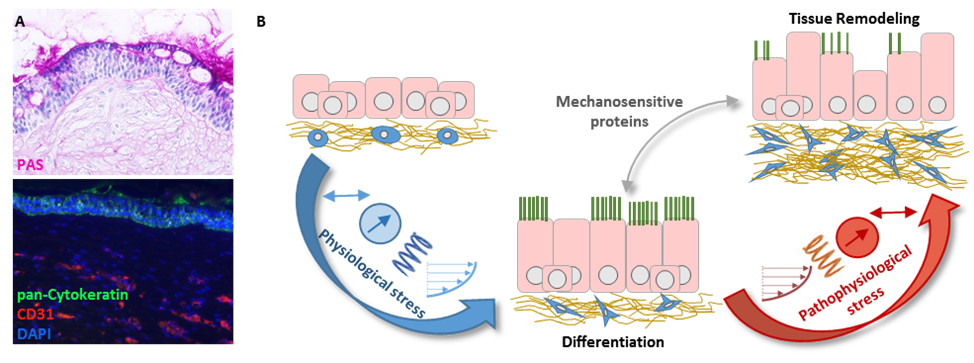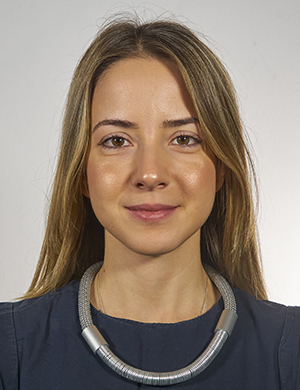Modeling the small airway mucosa in vitro to study mechanobiological effects on tissue remodeling
Department of Biohybrid & Medical Textiles (BioTex), AME-Institute of Applied Medical Engineering, RWTH Aachen University

Project overview. (A) In vitro tri-culture model of the airway mucosa. PAS and immunohistochemical staining presenting an epithelial layer on top and an underlying fibrin gel seeded with endothelial and supporting cells. (B) Induced differentiation and tissue remodeling of the airway mucosa model after exposure to (patho-)physiological mechanical strain (stretch, pressure, compression, stiffness, wall shear stress) and involvement of mechanosensitive channels/mechano-responsive proteins are investigated.








